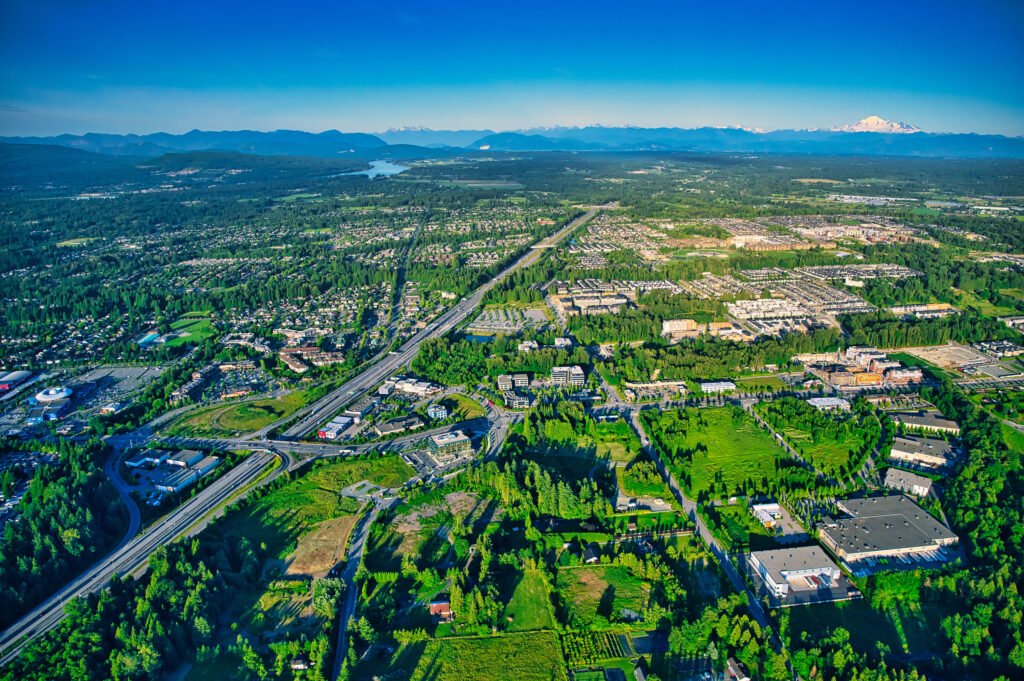Langley Township, located in British Columbia’s Metro Vancouver region, is navigating a time of rapid change. As one of the province’s oldest municipalities—incorporated in 1873—it is known for its mix of urban expansion, rural charm, and deep historical roots. But with a growing population and increased development pressure, the Township faces new challenges that are reshaping both its economy and identity.
With a population of more than 150,000 people and rising, Langley Township has become one of the fastest-growing areas in the region. Communities like Willoughby and Walnut Grove are seeing major residential and commercial growth, turning once-quiet neighborhoods into bustling hubs. This expansion has brought both opportunities and concerns. While new housing developments help meet demand in British Columbia’s tight real estate market, long-time residents and planners are grappling with how to preserve the area’s green space and farmland.
Langley Township is distinct from the neighboring City of Langley, which is surrounded by the Township but operates as a separate municipality. The Township itself is made up of several communities, including Aldergrove, Fort Langley, Brookswood, Murrayville, and Willoughby. Each area has its own unique character, from the rural agricultural fields of Aldergrove to the historic village of Fort Langley, which remains a popular tourist destination.
Recent developments have highlighted Langley Township’s complex position in larger national and international issues. A recent example is the impact of the Canada-U.S. trade dispute on local government spending. Township officials had to approve an extra $63,000 to cover unexpected tariffs on new bleacher seating for public events. The portable seating, manufactured by a Canadian company using American-made parts, was caught up in Canadian counter-tariffs on U.S. steel and aluminum.
Township staff had initially hoped the seating would avoid these charges, but reclassification efforts failed. The delay already affected Canada Day celebrations and threatened other upcoming events. The only bidder on the contract was a Canadian supplier, but most of the parts originated in the United States. Officials noted that cancelling the order would mean starting the process over, risking more disruptions. The Township now plans to apply to the federal government for relief, although there is no guarantee the claim will be approved.
This local example shows how Langley Township is not immune to international politics and trade tensions. At the same time, the Township is trying to manage growth in a way that meets resident needs without sacrificing the area’s rural heritage. Large parks like Campbell Valley Regional Park and attractions like the Greater Vancouver Zoo highlight the area’s natural assets and community focus. Local planners are increasingly emphasizing balanced development, aiming to build new infrastructure while maintaining quality of life for both new and long-term residents.
The Township’s economy reflects its diverse geography. While urban areas drive retail and construction jobs, rural zones support agriculture, equestrian centers, and wineries. Langley is also a popular location for film and TV productions, thanks to its variety of landscapes and proximity to Vancouver. Education is another key element, with the Langley School District providing K–12 education across the region and Trinity Western University serving as a major post-secondary institution in the Township.
Transportation and infrastructure have become major concerns as the population grows. Highway 1 and Fraser Highway serve as key routes, but congestion remains an issue. Township leaders and residents are calling for improved transit options, school expansion, and road upgrades to keep up with demand.
With a history that dates back to the earliest days of British Columbia and a future shaped by fast-moving developments, Langley Township finds itself at the center of both tradition and transition. As the region continues to evolve, local leaders will face tough decisions that affect not only infrastructure and housing but also the Township’s sense of identity and connection to the broader world.

